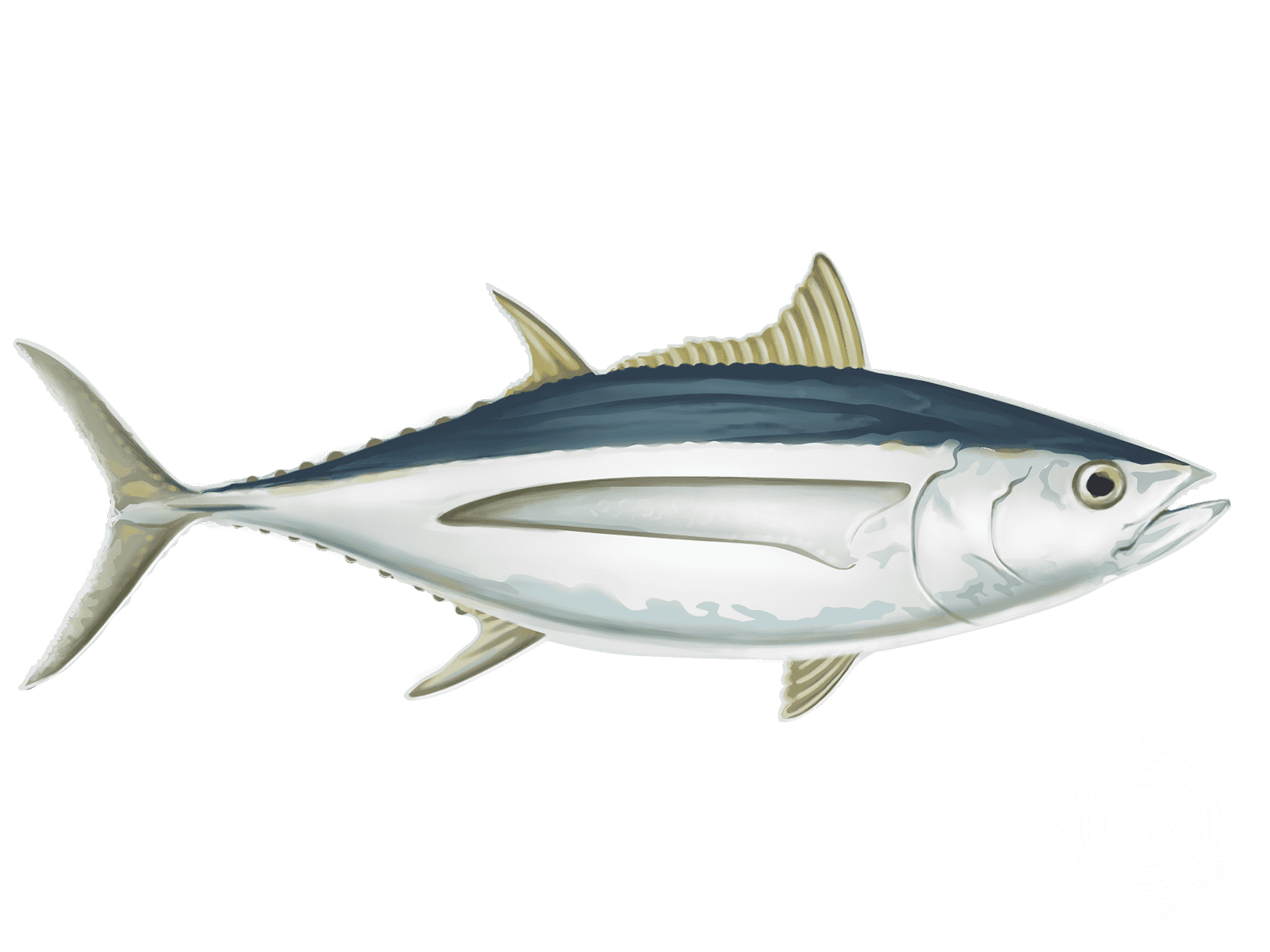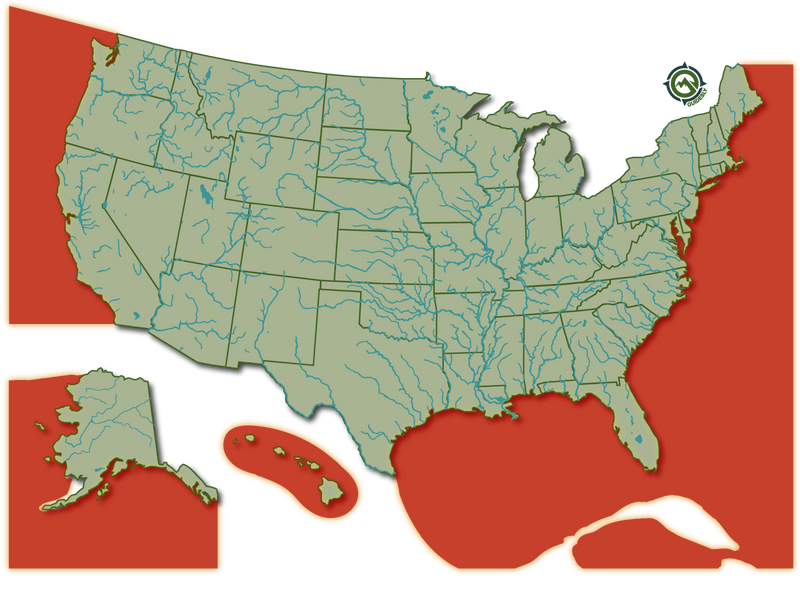Albacore Tuna

Species Details
Thunnus Alalunga
Scombridae
Perciformes
Offshore
20 - 45 lbs.
18" - 25"
Description
This bullet-shaped fish is one of the smaller tuna species. It has a big mouth, big eyes, and a cone-shaped nose. It has a dark gray-blue body with a silver-white abdomen. The pectoral fins are large, often as long as 30% of the fish's total length. Albacore tuna grow to between 18 and 25 inches and weigh between 20 and 45 pounds.
Spawning
Albacore starts spawning in March and ends in July. But multiple spawning can also happen each year. During the spawning phase, the female lays almost 2.6 million eggs. The eggs are fertilized near the water surface. The eggs develop very quickly after fertilization. Fry remain in the area where they hatched until they turn 2 years old.
Interesting Facts
Albacore tuna meat is delicious, and the only type of tuna that can be labeled and sold as white meat tuna. Its meat is the only which remains in larger pieces with lighter colored flesh, a firmer texture, and a milder flavor than chunk light fish varieties.
Tuna contains a moderate amount of mercury and should be somewhat limited in consumption.
They travel in schools up to 19 miles wide, which makes for great fishing!
Albacore never really rest; their need for oxygen means they must always be on the move.

Feeding is limited to daytime.
Habitat and Distribution
Albacore Tuna's habitat is deep in the ocean in subtropical and temperate waters. This includes both sides of the United States in the Atlantic Ocean's warmer water and the Pacific Ocean.
Baits and Lures
Common live baits for albacore are mackerel, herrings, anchovies, smelt, sardines, and squid. Best lures include swimming plugs, cedar plugs, or tuna feathers.
Fishing Techniques - How to Catch Albacore Tuna
Fishing methods include gillnet, purse seine, pole and line, longline, and trolling. Albacore travels in schools up to 19 miles wide which makes for great fishing. Because of this, trolling a good method of catching them. Generally, the first fish caught is the leading fish. If it gets hooked, the chances are that the majority of fish in the school would also be caught there. Note if that first hooked fish gets away, he will quickly leave the area and you may lose the whole school. Lures should be positioned 50-90 feet away and behind the boat. If you are fly fishing, closures and deceivers are the best types of flies.
Albacore Tuna World Record
The largest Albacore caught was off northern California's Santa Cruz in 1997. The tuna weighed 90 pounds giving it the California record. However, it was disallowed by the International Game Fish Association world record due to a technicality. The IGA record was caught in Spain by Siegfried Dickermann in November 1977. It weighed 88 pounds and 2 ounces. The angler used live mackerel as bait.
Regulations
Season - always open
Size limit - There is no size limit.
Bag limit - There is no daily bag limit







